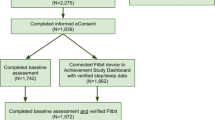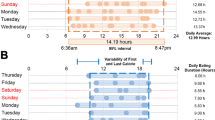Abstract
As diet has been considered as the major exposure pathway for toxic chemicals, such as heavy metals and pesticides, we have developed a web-based questionnaire system, the internet data logger (iDL), in order to facilitate the collection of detailed self-recording of standardized daily dietary consumption. An iDL prototype optimized for hand-held devices was tested in the on-going Children's Pesticide Exposure Study (CPES) in Atlanta, GA in which 15 consecutive days of dietary consumption information were recorded by 11 children or their parents and transmitted to a server via broadband wireless internet connection. Participants spent an average of 6.2 min in day 1 to enter a meal into iDL and approximately 4 min per meal for the remaining 14 study days. Approximately 75% of 446 total meals were entered into iDL on the date of consumption. A within-person comparison revealed that many food items recorded on paper diary were later classified as “unknown” according to iDL standards due to the lack of detailed information provided by the participants. The development of iDL represents a novel and pioneering tool, which integrates dietary data collection, transmission, and management in a real-time and automated manner. iDL provides the needed flexibility and mobility for research focused on collecting not only dietary consumption data but also other time-sensitive behavior data. This study has demonstrated that iDL can be deployed to collect long-term dietary consumption information in a population-based study, though future modifications/enhancements will undoubtedly improve its usability and application.
This is a preview of subscription content, access via your institution
Access options
Subscribe to this journal
Receive 6 print issues and online access
$259.00 per year
only $43.17 per issue
Buy this article
- Purchase on Springer Link
- Instant access to full article PDF
Prices may be subject to local taxes which are calculated during checkout




Similar content being viewed by others
Abbreviations
- CPES:
-
Children's Pesticide Exposure Study
- iDL:
-
internet data logger
- USDA:
-
United State Department of Agriculture
References
Adamson A.J., and Mathers J.C. Effecting dietary change. Proc Nutr Soc 2004: 63 (4): 537–547.
Beasley J., Riley W.T., and Jean-Mary J. Accuracy of a PDA-based dietary assessment program. Nutrition 2005: 21: 672–677.
Centers for Disease Control and Prevention. Children and teens told by doctors that they were overweight — United States, 1999–2002. MMWR 2005: 54 (34): 848–849.
Lu C., Toepel K., Irish R., Fenske R.A., Barr D.B., and Bravo R. Organic diets significantly lower children's dietary exposure to organophosphorus pesticides. Environ Health Perspect 2006: 114: 260–263.
Mahaffey K.R., Clickner R.P., and Bodurow C.C. Blood organic mercury and dietary mercury intake: National Health and Nutrition Examination Survey, 1999 and 2000. Environ Health Perspect 2004: 112 (5): 562–570.
National Research Council. Pesticides in the Diets of Infants and Children. National Academy Press, Washington, DC, 1993.
Pennycook F.R., Diamand E.M., Watterson A., and Howard C.V. Modeling the dietary pesticide exposures of young children. Int J Occup Environ Health 2004: 10 (3): 304–309.
Probst Y.C., and Tapsell L.C. Overview of Computerized Dietary Assessment Programs for Research and Practice in Nutrition Education. J Nutr Educ Behav 2005: 37 (1): 20–26.
Roche H.M., Phillips C., and Gibney M.J. The metabolic syndrome: the crossroads of diet and genetics. Proc Nutr Soc 2005: 64 (3): 371–377.
Russell L.B., Valiyeva E., Roman S.H., Pogach L.M., Suh D.C., and Safford M.M. Hospitalizations, nursing home admissions, and deaths attributable to diabetes. Diabet Care 2005: 28 (7): 1611–1617.
Schwenke D.C. Insulin resistance, low-fat diets, and low-carbohydrate diets: time to test new menus. Curr Opin Lipidol 2005: 16 (1): 55–60.
Tinuviel Software. Available at http://www.tinuvielsoftware.com/food24.htm.Accessed August 18, 2005.
US Department of Agriculture. Continuing Survey of Food Intakes by Individuals, 1994–1996. Available at http://www.ars.usda.gov/Services/docs.htm?docid=7889Accessed October 5, 2005.
US Food and Drug Administrations. Reference amounts customarily consumed per eating occasion, 1996; 21 CFR 101.12.
Wylie-Rosett J., Mossavar-Rahmani Y., and Gans K. Recent dietary guidelines to prevent and treat cardiovascular disease, diabetes, and obesity. Heart Dis 2002: 4 (4): 220–230.
Acknowledgements
This study was funded by the US Environmental Protection Agency (EPA), Science to Achieve Results (STAR) program (RD-832244). Its contents are solely the responsibility of the authors and do not necessarily represent the official view of the US EPA. We thank Marjory Givens who helped us to conduct in-home training of using iDL with the participants. We would like to express our sincere appreciation to the children who participated and to their parents who greatly assisted in this study.
Author information
Authors and Affiliations
Corresponding author
Rights and permissions
About this article
Cite this article
Lu, C., Pearson, M., Renker, S. et al. A novel system for collecting longitudinal self-reported dietary consumption information: The internet data logger (iDL). J Expo Sci Environ Epidemiol 16, 427–433 (2006). https://doi.org/10.1038/sj.jes.7500479
Received:
Accepted:
Published:
Issue Date:
DOI: https://doi.org/10.1038/sj.jes.7500479
Keywords
This article is cited by
-
Dietary patterns among the Metro Atlanta Cohort: Implications for population-based longitudinal dietary pesticide exposure and risk assessment
Journal of Exposure Science & Environmental Epidemiology (2011)
-
Comparison of food consumption frequencies among NHANES and CPES children: Implications for dietary pesticide exposure and risk assessment
Journal of Exposure Science & Environmental Epidemiology (2010)



